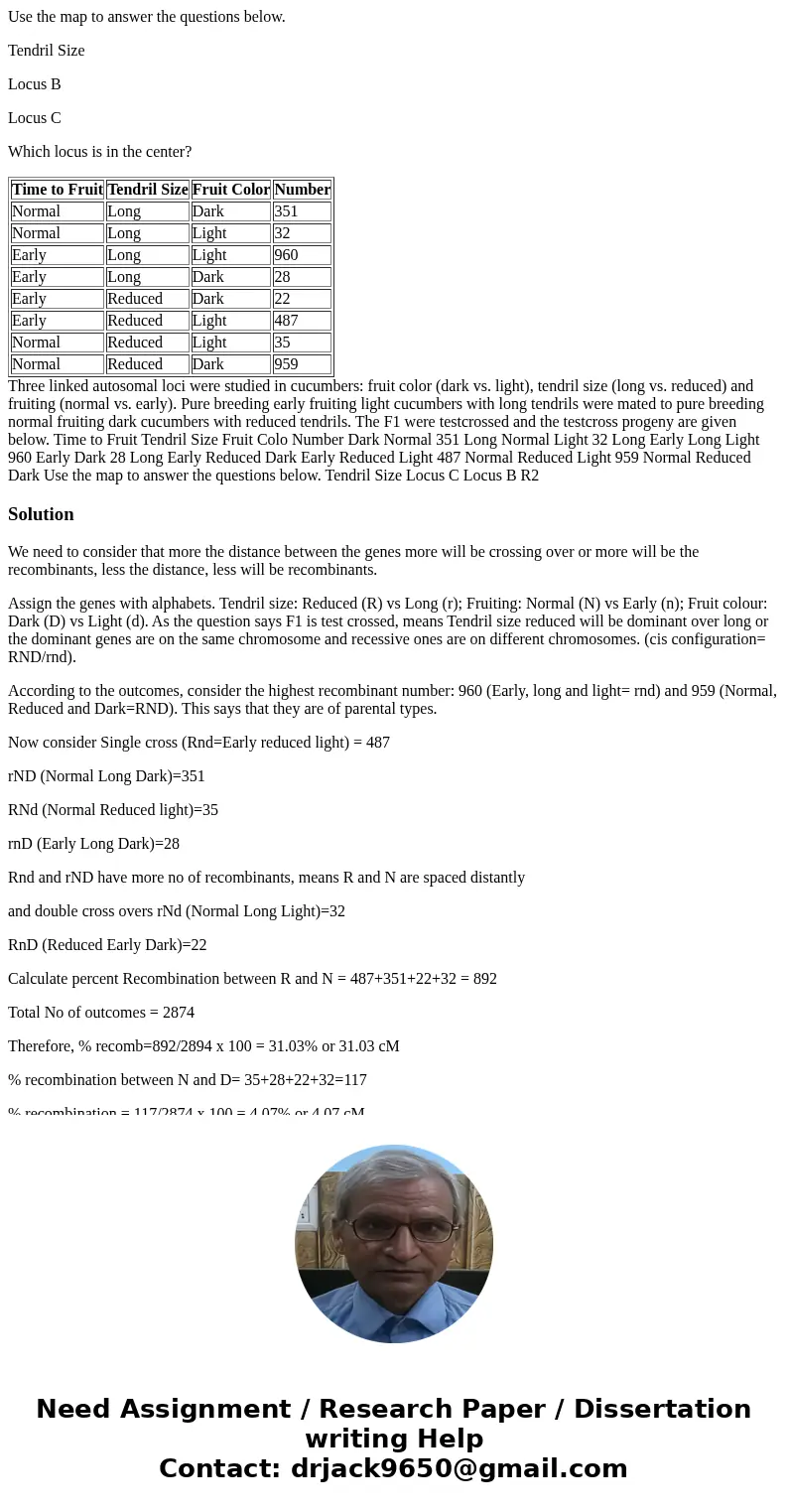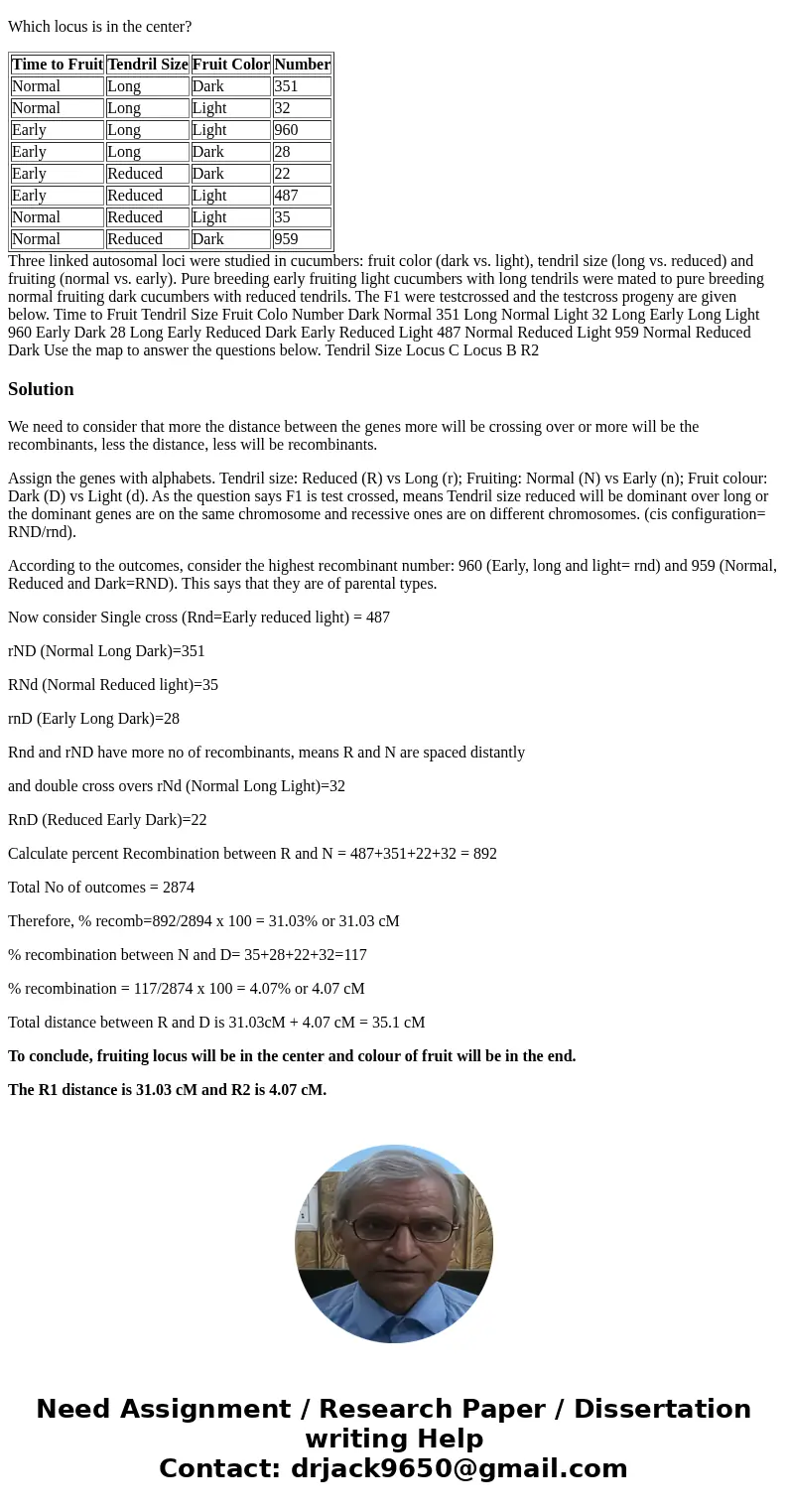Use the map to answer the questions below Tendril Size Locus
Use the map to answer the questions below.
Tendril Size
Locus B
Locus C
Which locus is in the center?
| Time to Fruit | Tendril Size | Fruit Color | Number |
| Normal | Long | Dark | 351 |
| Normal | Long | Light | 32 |
| Early | Long | Light | 960 |
| Early | Long | Dark | 28 |
| Early | Reduced | Dark | 22 |
| Early | Reduced | Light | 487 |
| Normal | Reduced | Light | 35 |
| Normal | Reduced | Dark | 959 |
Solution
We need to consider that more the distance between the genes more will be crossing over or more will be the recombinants, less the distance, less will be recombinants.
Assign the genes with alphabets. Tendril size: Reduced (R) vs Long (r); Fruiting: Normal (N) vs Early (n); Fruit colour: Dark (D) vs Light (d). As the question says F1 is test crossed, means Tendril size reduced will be dominant over long or the dominant genes are on the same chromosome and recessive ones are on different chromosomes. (cis configuration= RND/rnd).
According to the outcomes, consider the highest recombinant number: 960 (Early, long and light= rnd) and 959 (Normal, Reduced and Dark=RND). This says that they are of parental types.
Now consider Single cross (Rnd=Early reduced light) = 487
rND (Normal Long Dark)=351
RNd (Normal Reduced light)=35
rnD (Early Long Dark)=28
Rnd and rND have more no of recombinants, means R and N are spaced distantly
and double cross overs rNd (Normal Long Light)=32
RnD (Reduced Early Dark)=22
Calculate percent Recombination between R and N = 487+351+22+32 = 892
Total No of outcomes = 2874
Therefore, % recomb=892/2894 x 100 = 31.03% or 31.03 cM
% recombination between N and D= 35+28+22+32=117
% recombination = 117/2874 x 100 = 4.07% or 4.07 cM
Total distance between R and D is 31.03cM + 4.07 cM = 35.1 cM
To conclude, fruiting locus will be in the center and colour of fruit will be in the end.
The R1 distance is 31.03 cM and R2 is 4.07 cM.


 Homework Sourse
Homework Sourse